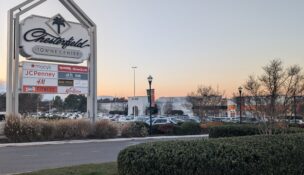‘The last mile’
Bringing broadband to Virginia’s most rural areas poses challenges.
‘The last mile’
Bringing broadband to Virginia’s most rural areas poses challenges.
Until this year, Becky Birnbaum says, the Internet service at her home in rural Nelson County was so bad that “I couldn’t even download a YouTube video. … Sometimes I couldn’t even get my email to download, it was so horrible.”
An IT professional at Silverchair Learning Systems in Charlottesville, Birnbaum often was frustrated by the lack of high-speed Internet available at her home, which sits at the foot of Afton Mountain on Route 151. She had three choices: a dial-up modem through her phone connection, satellite dish or a cellular mobile broadband service. She first tried satellite but found the latency and slow upload speeds to be a problem, and then she had similar problems with the cellular broadband. “If I ever tried to work from home, it was just untenable.”
That all changed when Blue Ridge InternetWorks began offering high-speed fiber-optic Internet in some areas of Nelson County this spring. The county built a $3.1 million fiber network that is being operated by Blue Ridge InternetWorks. The network is funded through federal grants and matching local funds.
A similar $10 million network is going online this summer in Buena Vista, Lexington and Rockbridge County, funded largely by a $7 million federal stimulus grant and $2.5 million from Washington and Lee University.
“This will provide much more bandwidth and expand opportunities for [local] businesses to be able to compete at a regional and a global level,” says Brian Brown, economic development director for the City of Buena Vista. “It’s also going to open up so much for the colleges and the universities, and it will be much more reliable for the students.”
As one of the Nelson network’s first new customers, Birnbaum says her Internet connection has improved by “leaps and bounds. I can work from home now and do video streaming and teleconferencing. I might be working for myself as a consultant in a couple of months, and I can do that from home. We’re paying the same amount for 100 times the [Internet] service. It’s literally 100 times faster. It’s huge. I’ve gone from being like the person in my office with no Internet access to being the person with the best Internet access.”
Virginia ranks eighth in the nation in broadband adoption, but there are ongoing efforts to extend service into the more rural areas. High-speed Internet access is available to about 85 percent to 90 percent of Virginians, says Virginia Deputy Secretary of Technology Karen Jackson, but “the problem is that the last 10 percent are in the roughest terrain; they’re in the least populated areas.”
During the recent recession, some rural communities delayed progress on high-speed Internet projects that weren’t funded with federal stimulus money, Jackson says. During the past year, however, efforts have ramped up in localities across the state, including Frederick, Prince George and Surry counties and the Northern Neck.
Satellite Internet is available anywhere in the commonwealth, and some, such as the NOVECnet high-speed service launched last year by the Northern Virginia Electric Cooperative, are quite good, Jackson says. But customers in more rural areas may have problems with transmission latency or with the mountainous and forested terrain creating line-of-sight issues with satellites. As cellular technology improves and reaches more coverage areas, that also may prove to be a solution, Jackson says.
The ideal delivery system for high-speed Internet is to run high-capacity fiber-optic cable as in Nelson County, but that’s not always a cost-effective or practical solution.
Nelson’s network is what’s known as a “middle-mile” network: The county installed a fiber-optic backbone and then service providers run cable to customers’ homes, which is known as the “last mile.” Unfortunately, that last mile can be quite long in rural areas, and running buried fiber-optic cable can get expensive.
To hook up to the network, Nelson customers must pay an installation fee, which is amortized over five years. This has ranged from $600 to $6,000 for individual customers, says Baylor Fooks, co-owner of Blue Ridge InternetWorks, who likens installation to connecting a rural customer to an electrical co-op or public utilities. In its first two months this spring, only 20 customers had signed up. The county broadband authority also will begin offering an expanded wireless network, using the new high-speed fiber infrastructure.
“There’s still a large number of residents in Nelson County that are prohibitively far away from the backbone fiber to make this work, and the hope is that wireless [Internet service providers] or tactical deployments of DSL will solve those problems,” Fooks says.
Adds Jackson: “There’s not a soul on the planet that wouldn’t want fiber to the home. Everybody wants that, but to be able to drill through rock to lay fiber into some of these areas is just cost prohibitive, so a lot of the communities are looking at wireless solutions as a way to reach more homes [with high-speed Internet] in a more cost-effective manner.”
In the Northern Neck, the local planning district commission and local wireless Internet provider Northern Neck Wi-Fi have struggled to find federal grants or loans to upgrade the local wireless network to deliver high-speed service to rural areas, particularly along the region’s sprawling 1,200 miles of shore line.
Northern Neck Wi-Fi’s current technology delivers Internet to about 3,500 rural homes, but “we know there are people who still don’t have Internet. We have 1,000 or more on our waiting list we can’t provide with Internet right now,” says network engineer Tom Foulkes, a network engineer and one of the company’s owners. The current wireless network also can’t deliver the capacity or speeds needed to keep up with today’s multimedia Internet. “Two years ago, Netflix was a new idea, but now it’s the norm,” Foulkes says. “A lot more bandwidth is being used.”
Another problem is that his wholesale price for buying Internet access to deliver to his customers is much higher than it would be for a service provider in a densely populated, urban area because as a rural provider he has to pay additional connection fees.
For about $6 million, Foulkes estimates, he could upgrade his wireless network with a new system that could deliver high-speed Internet to about 75 percent of the Northern Neck. He could get a pilot system started for about $1.65 million. But grant money hasn’t been available for the past couple years, and the USDA already has turned down one federal loan application from Northern Neck Wi-Fi. Now Foulkes is trying to decide whether he should reapply for the federal loan — a long, complicated process fraught with red tape — or whether he should hire a grant writer to seek funds. He’s consulting the office of U.S. Sen. Mark Warner for help.
For Foulkes, high-speed Internet is a crucial issue for his community’s future. “These kids in school down here need high-speed Internet and most of their homes don’t have it,” says the father of four (whose wife is expecting their fifth child). If he can upgrade the wireless network, he plans to offer low-cost or free high-speed Internet access to poor families with school-age children. “Yes, I want to make money off of it, but I really want to help the area, and that’s my first and foremost thing to do,” he explains.
“My son is 9, and he can set up a server. I think if more children had the chance to do their homework on the Internet, they’d get better grades and be able to go further on [in their educations]. From my personal experience, high-speed Internet is very important for kids to study and to learn computers and for their futures.”
T
















